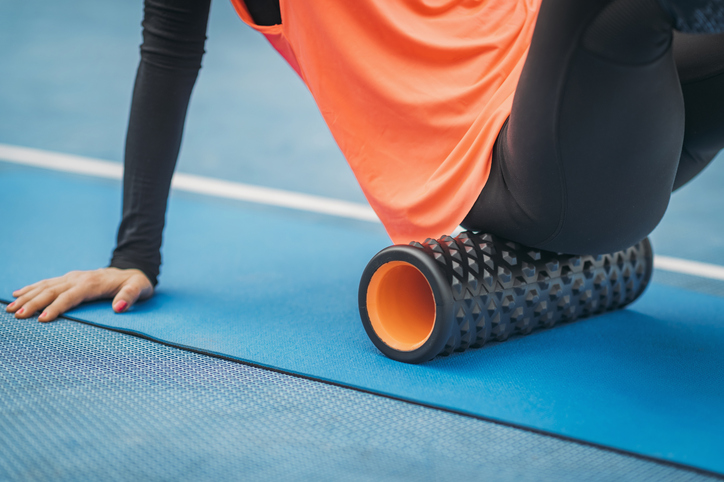Foam Rolling Recovery Tools
Foam rolling is a great way to give your muscles some self care.

Recovery is something every athlete knows the value of, but with all the different tools, treatments and tips out there, how do we decide what’s best for us? Although a weekly massage would be a great idea, not many of us have the time or funds available, so foam rolling is one of the best ways to give your muscles a bit of self-care.
With one basic tool, you can treat almost any muscle in your body. Foam rolling helps to lengthen muscles, increase blood flow, reduce tension, alleviate knots, restore mobility and calm angry trigger points. It can be used as a warm up tool before workouts, as a recovery tool after exercise and, on its own, to release stress and tension to help rehabilitate the body.
What to Use
There are many different types of “foam” rollers and recovery tools available, ranging from gentle PVA rollers to the more aggressive hard rubber versions, complete with bumps for deep tissue work. Some even come with a vibrating option to further work those knots. What you choose to work with depends partly on what part of your body needs the work, how deeply you want to get into the muscles and, honestly – your tolerance for discomfort. My favourite roller has to be the TriggerPoint Grid Vibe, which uses vibrations to relax your muscle tissue, reduce pain sensations, and increase circulation faster than non-vibrating rollers.
Recovery tools include everything from a simple lacrosse ball to a percussive therapy gun. The lacrosse ball is cheap and easy to find at your local sport goods store, as are most foam rollers. Percussive therapy guns are a very effective recovery tool, but can be expensive. Foam rollers are easy to use and come in a wide variety of shapes and sizes. They are easy to pack and bring to a training camp and can provide you with the relief you need to make it through your tough training days.
Many of us know we should be rolling regularly, but often only use them when our muscles have already built up a lot of stiffness. Put together a regular rolling routine and implement it into your training plan about three times a week. This will keep your muscles happy during training and reduce the risk of injury. At the very least, it’ll keep your body moving until your next massage.
When and How to Roll
Many athletes are unsure about when to use the foam roller and how to use it before or after workouts. Different techniques elicit different responses from our muscles. For example, using a lengthening technique (such as rolling up and down on your calf) is going to stretch and relax your muscles. This type of technique is good for post-workout recovery.
We don’t want to do too much lengthening and relaxing of muscles before a workout because they will have a harder time trying to maximally contract – especially if you’re performing explosive or powerful movements. Using the foam roller to apply deep pressure on knots or trigger points is also great for recovery after a workout, but should not be used before exercise.
Keeping this in mind, it is beneficial to roll lightly before a workout. Light foam rolling increases blood flow and warms up the muscles. If you want to include foam rolling as part of your warm up routine, here are a few tips:
- Avoid any deep pressure
- Don’t try to break up any knots or tight spots
- Roll lightly over major muscle groups
- Stick to the areas you will be relying on during your workout
- Try rolling out feet and calves before a run
After a workout, spend more time getting deeper into muscles using cross friction techniques to break up adhesions or tight muscle tissue. Roll out quads and use knee bends to really lengthen the muscles. This is where you can take your time are work out those tight spots.
Here is a simple post workout rolling routine (5 to 10 minutes):
- Tennis ball on the bottom of feet, rolling and cross frictions
- Foam roller on calves with ankle movements
- Roll along shins into the tops of feet
- Roll through hamstrings, IT band, and adductors (inner thigh)
- Roll through quads with knee bends
- Roll into hip and hip flexors
- Cross friction rolling on glutes
- Roll through low back
- Tennis ball on low back close to spine, bring knee to chest
Sophie Hotchkiss is a registered massage therapist, personal trainer and coach with CL Performance Training. She competes as an elite athlete in triathlon and cyclocross.
This story originally appeared in the May, 2020 issue of Triathlon Magazine Canada
